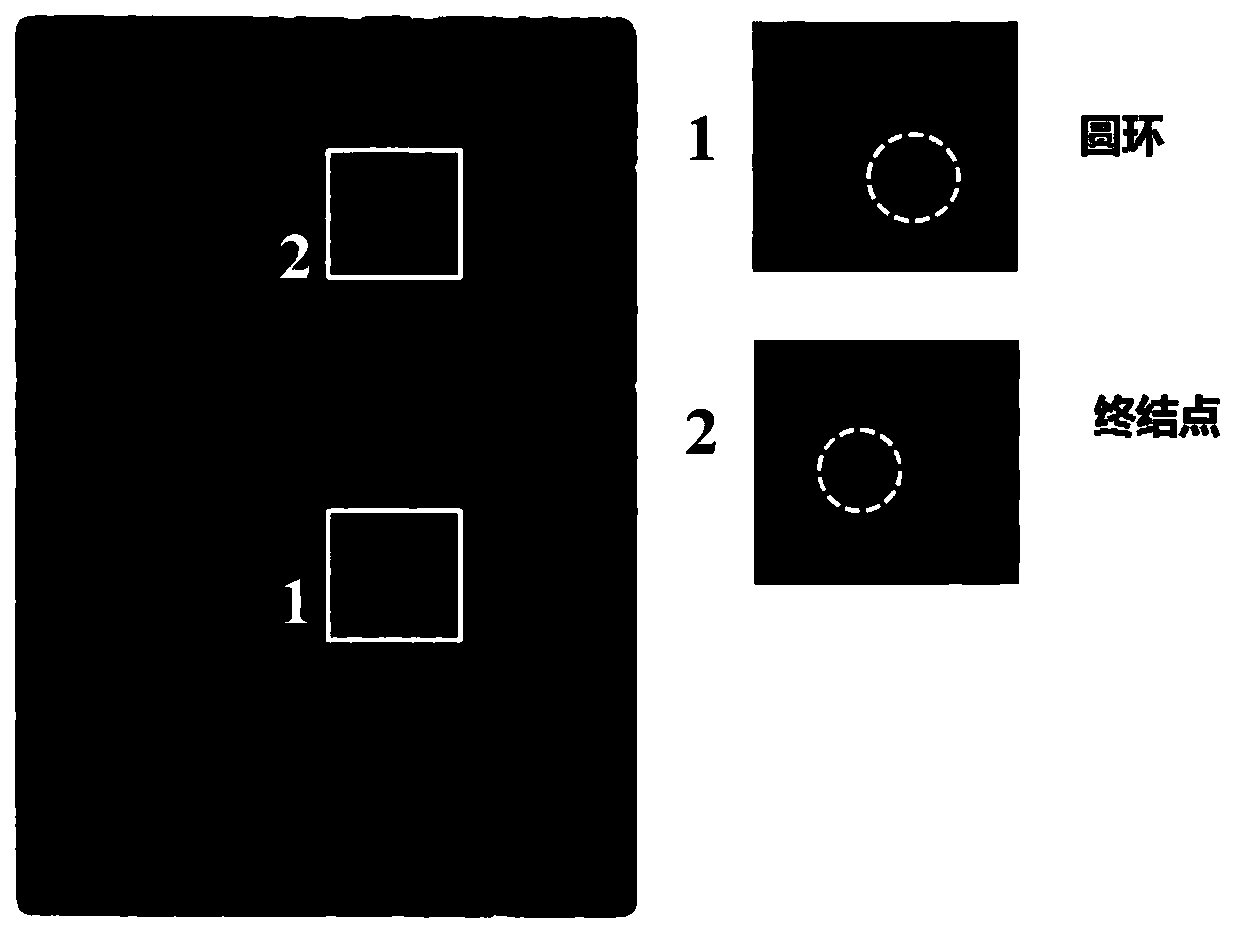A method for displaying latent fingerprints on the surface of different hydrophilic and hydrophobic materials
A water-based material and latent fingerprint technology, which is applied in the field of fingerprint identification, can solve the problems of inapplicable latent fingerprint display and popularization and application of methods, unsatisfactory secondary structure display effect, and lack of latent fingerprint display ability, so as to achieve fast and easy display. Popularization, excellent effect
- Summary
- Abstract
- Description
- Claims
- Application Information
AI Technical Summary
Problems solved by technology
Method used
Image
Examples
Embodiment 1
[0023] Taking the appearance of latent fingerprints on the surface of PVDF film as an example, the specific operation has the following steps:
[0024] (1) Cut the PVDF membrane with scissors into a size of 1.5×2cm, and place it in a plastic petri dish scrubbed with ethanol for use;
[0025] (2) Gently press the oil latent fingerprint on the surface of the PVDF film object to obtain the oil latent fingerprint-PVDF film;
[0026] (3) Configure CTAB solution and CNTs diluent;
[0027] (4) Drop the CTAB solution onto the surface of the latent fingerprint substrate and react for 10 minutes to obtain the oil latent fingerprint-PVDF film-CTAB;
[0028] (5) Immerse the positively charged oil latent fingerprint-PVDF film-CTAB obtained in step (4) in the CNTs diluent, react for 5 minutes, and rinse with ultrapure water after taking it out. Under natural light, you can directly use the naked eye Observe clear fingerprints; place the displayed oil latent fingerprint-PVDF film-CTAB-CNTs on a horiz...
Embodiment 2
[0030] Taking the appearance of latent fingerprints on the surface of NC film as an example, the specific operation has the following steps:
[0031] (1) Cut the NC film into a size of 1.5×2cm with scissors, and place it in a plastic petri dish scrubbed with ethanol for use;
[0032] (2) Gently press the oil latent fingerprint on the surface of the NC film object to obtain the oil latent fingerprint-NC film;
[0033] (3) Configure CTAB solution and CNTs diluent;
[0034] (4) Drop the CTAB solution onto the surface of the latent fingerprint substrate and react for 10 minutes to obtain the oil latent fingerprint-NC film-CTAB;
[0035] (5) Immerse the positively charged oil latent fingerprint-NC film-CTAB obtained in step (4) in the CNTs diluent, react for 10 minutes, rinse with ultrapure water after taking it out, and use the naked eye directly under natural light. Observe clear fingerprints; place the displayed oil latent fingerprint-NC film-CTAB-CNTs on a horizontal object, and take a ...
PUM
 Login to View More
Login to View More Abstract
Description
Claims
Application Information
 Login to View More
Login to View More - R&D
- Intellectual Property
- Life Sciences
- Materials
- Tech Scout
- Unparalleled Data Quality
- Higher Quality Content
- 60% Fewer Hallucinations
Browse by: Latest US Patents, China's latest patents, Technical Efficacy Thesaurus, Application Domain, Technology Topic, Popular Technical Reports.
© 2025 PatSnap. All rights reserved.Legal|Privacy policy|Modern Slavery Act Transparency Statement|Sitemap|About US| Contact US: help@patsnap.com



